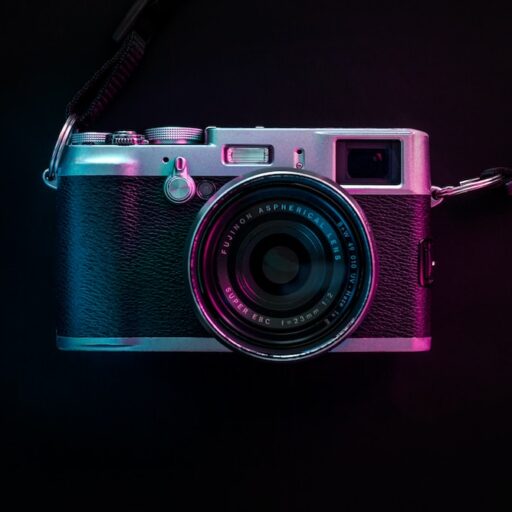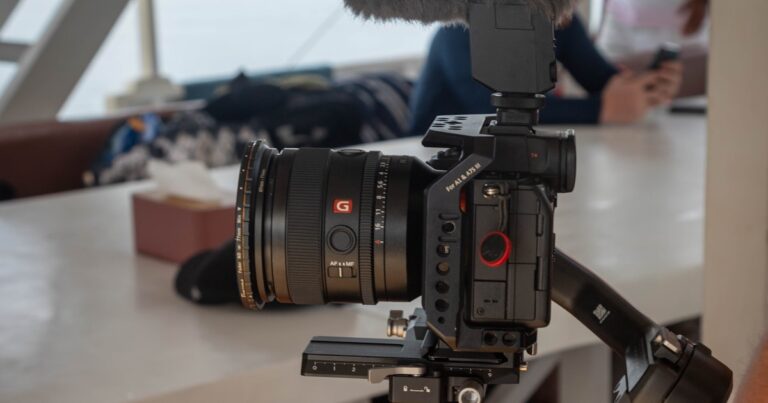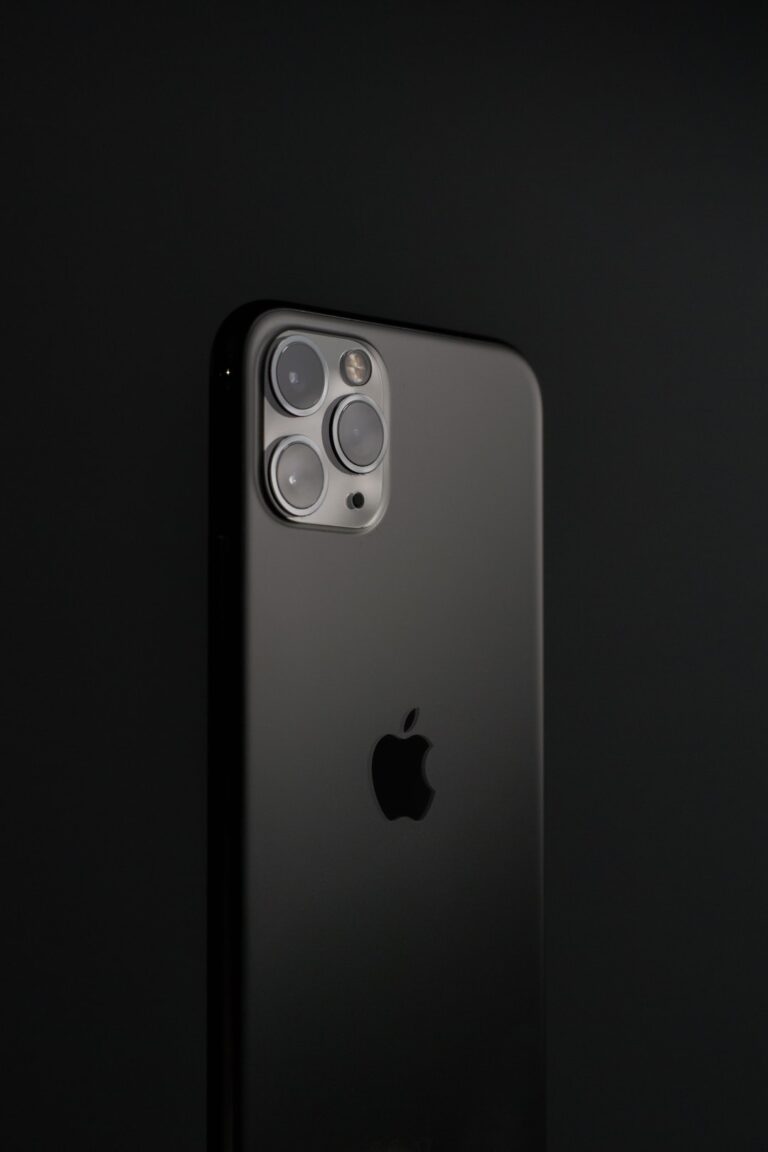Support our educational content for free when you purchase through links on our site. Learn more
Olympus Camera Review 2025: 7 Models That Capture Magic 📸
If you think Olympus cameras are just relics of the past, think again! From the legendary PEN series that revolutionized street photography to the cutting-edge OM System OM-1 Mark II that’s redefining mirrorless performance, Olympus cameras have evolved into compact powerhouses packed with innovation. Whether you’re a globe-trotting adventurer craving lightweight gear or a wildlife photographer chasing the perfect shot, this comprehensive review covers 7 top Olympus and OM System models that will make you rethink what a camera can do.
Did you know that Olympus’s in-body image stabilization can give you up to 8.5 stops of shake reduction? That’s like turning a shaky handheld shot into a tripod-level masterpiece! Later in the article, we’ll break down how this and other groundbreaking features like Pro Capture and Live ND can transform your photography. Plus, we’ll guide you through choosing the perfect Olympus camera based on your style, budget, and shooting needs.
Key Takeaways
- Olympus is now OM System: The brand continues its legacy with innovative mirrorless cameras and lenses built around the Micro Four Thirds sensor format.
- Compact & Lightweight: Olympus cameras offer some of the smallest, lightest bodies and lenses without compromising on pro-level features.
- Unmatched Image Stabilization: Their 5-axis Sync IS system provides industry-leading shake reduction, perfect for handheld shooting in challenging conditions.
- Top Models Reviewed: From the flagship OM-1 Mark II to the travel-friendly OM-5 and rugged Tough TG-7, we cover 7 must-know cameras.
- Versatile Lens Ecosystem: The M.Zuiko PRO lenses and compatibility with Panasonic lenses offer a huge range of creative options.
- Ideal for Travel, Wildlife, and Street Photography: Olympus cameras excel in portability, speed, and durability, making them perfect companions for capturing life’s moments.
CHECK PRICE on Olympus and OM System Cameras:
Table of Contents
- ⚡️ Quick Tips and Facts About Olympus Cameras
- 📸 Olympus Camera Evolution: From Classic to Cutting-Edge
- 🔍 1. Top Olympus Camera Models Reviewed: Which One Fits You?
- ⚙️ Olympus Lenses and Accessories: Enhancing Your Photography
- 🛠️ Olympus Camera Features Explained: What Makes Them Stand Out?
- 📷 How to Choose the Right Olympus Camera for Your Needs
- 🎯 Olympus Camera Performance: Image Quality, Autofocus, and Speed
- 🌍 Olympus Cameras for Travel and Outdoor Photography
- 🔧 Maintenance and Care Tips for Your Olympus Camera
- 💡 Expert Tips and Tricks for Getting the Most Out of Your Olympus Camera
- 🛒 Where to Buy Olympus Cameras: Best Retailers and Deals
- 📊 Olympus Camera vs Competitors: How Does It Stack Up?
- 📚 Recommended Reading and Resources for Olympus Camera Enthusiasts
- 🔚 Conclusion: Is an Olympus Camera Right for You?
- 🔗 Recommended Links for Olympus Cameras
- ❓ Frequently Asked Questions About Olympus Cameras
- 📑 Reference Links and Sources
Body
Alright, let’s dive in! We here at Camera Brands™ get questions about Olympus cameras all the time. Are they still relevant? What‘s this “OM System” thing all about? And most importantly, which one should you get? Grab a cup of coffee, and let’s unpack everything you need to know about this legendary camera brand.
⚡️ Quick Tips and Facts About Olympus Cameras
- It’s OM System Now: First things first, the Olympus camera division was sold and is now known as OM System. While you’ll still see the Olympus name on many fantastic cameras, the new flagship models are branded OM System. It’s the same legacy of innovation, just with a new name on the door!
- Micro Four Thirds (MFT) Magic: Olympus/OM System cameras use the Micro Four Thirds sensor format. This is a key point! It means the cameras and lenses are significantly smaller and lighter than their APS-C and full-frame competitors. Perfect for travel and hiking!
- King of Stabilization: They are famous for their in-body image stabilization (IBIS). Seriously, it’s mind-blowingly good. We’re talking tack-sharp handheld shots at shutter speeds you wouldn’t dream of with other systems.
- Weather-Sealed Wonders: Many OM-D and OM System models have class-leading weather sealing. We’ve shot with these cameras in pouring rain and dusty conditions without a single hiccup. The flagship models, like the OM-1 Mark II, boast an impressive IP53 rating.
- Computational Powerhouse: OM System is leaning heavily into computational photography. Features like Live ND, Handheld High-Res Shot, and Live Composite let you create amazing long-exposure and high-detail images right in the camera, no tripod needed.
- Connectivity is Key: Modern Olympus and OM System cameras come packed with wireless features. If you’re wondering about the specifics, our guide on How Do I Connect My Olympus Camera? 5 Easy Ways to Master It in 2025 📸 has you covered.
📸 Olympus Camera Evolution: From Classic to Cutting-Edge
Olympus has a rich history that stretches back way before digital. The company first dipped its toes into photography in the 1930s and legally became Olympus Optical Co., Ltd. in 1949.
The real game-changer was a designer named Yoshihisa Maitani. His philosophy was simple: challenge the idea that “real cameras had to have lots of controls.” He wanted to create cameras that were smaller, lighter, and quieter without sacrificing performance.
This thinking gave birth to two legendary lines:
- The Olympus PEN Series (1959): This was a revolutionary half-frame 35mm film camera. As photographer Harold Feinstein fondly recalled, “It was a camera I loved using.” [cite: haroldfeinstein.com] It was named the “Pen” because it “aspired to be small like a pen!” and its simplicity and compact size made it a street photography icon, selling over 17 million units.
- The Olympus OM System (1972): Maitani then applied his “small and mighty” philosophy to the SLR world with the OM-1. It was a compact, robust, and quiet 35mm SLR that stood in stark contrast to the bulky competitors of the era.
This legacy of compact power and innovative design is the DNA you see in today’s OM System cameras. The transition from Olympus to OM Digital Solutions in 2021 wasn’t an end, but a rebranding to carry that forward-thinking spirit into the modern mirrorless age.
🔍 1. Top Olympus Camera Models Reviewed: Which One Fits You?
So, which camera should you actually buy? The lineup is generally split into three families: the pro-oriented OM-D (now the main OM series), the stylish PEN, and the indestructible Tough series.
The first YouTube video embedded in this article, titled “Top 5 Olympus Cameras for 2025,” offers a great visual roundup of the current top contenders. Check it out at #featured-video for a closer look!
1.1 Olympus OM-D Series: Mirrorless Marvels
These are the workhorses, the spiritual successors to the original OM film SLRs. They feature an “SLR-style” body with a centered electronic viewfinder (EVF).
OM System OM-1 Mark II
| Feature | Rating (1-10) |
|---|---|
| Build & Weather Sealing | 10 |
| Image Quality | 9 |
| Autofocus | 9 |
| Speed & Performance | 10 |
| Features & Innovation | 10 |
This is the current flagship, and boy, is it a beast. It takes everything great about the original OM-1 and refines it. The autofocus is smarter, the buffer is deeper, and the computational features like Live GND (Graduated ND) are genuinely game-changing.
- ✅ Pros: Blistering speed (up to 120fps!), incredible IP53 weather sealing, phenomenal image stabilization (rated up to 8.5 stops), and a suite of computational tools that feel like magic. The rubberized dials are a small but welcome improvement for shooting with gloves.
- ❌ Cons: The 20MP sensor, while a fantastic stacked BSI sensor, might feel low-resolution for those coming from higher-megapixel full-frame systems.
We think: For wildlife, sports, and serious outdoor photographers who need a rugged, fast, and feature-packed tool, the OM-1 Mark II is arguably the pinnacle of the Micro Four Thirds system.
👉 CHECK PRICE on:
- OM System OM-1 Mark II: Amazon | Walmart | eBay | OM System Official Website
OM System OM-5
| Feature | Rating (1-10) |
|---|---|
| Portability & Design | 10 |
| Image Quality | 8 |
| Features for Price | 9 |
| Build & Weather Sealing | 9 |
| Value | 8 |
The OM-5 is the ultimate travel and adventure camera. It packs many of the powerful features of its bigger siblings—like IP53 weather sealing and Handheld High-Res mode—into a much more compact and lightweight body.
- ✅ Pros: Incredibly compact and light, excellent image stabilization, and powerful computational features like Live ND and Starry Sky AF make it a versatile outdoor companion.
- ❌ Cons: It uses the older Olympus menu system, not the updated one from the OM-1. It also sticks with a micro USB port, which feels dated. Some users miss the full metal body of older E-M5 models, though the high-quality plastic is still very robust.
We think: If you prioritize size and weight for hiking, travel, or everyday carry but don’t want to compromise on power and durability, the OM-5 is a fantastic choice. It’s arguably the best travel camera on the market.
👉 CHECK PRICE on:
- OM System OM-5: Amazon | Walmart | eBay | OM System Official Website
Olympus OM-D E-M10 Mark IV
| Feature | Rating (1-10) |
|---|---|
| Size & Portability | 10 |
| Ease of Use | 9 |
| Image Quality | 8 |
| Features for Beginners | 9 |
| Value | 10 |
Still rocking the Olympus branding, the E-M10 Mark IV is the perfect entry point into the system. It’s stylish, incredibly lightweight, and packed with features that punch way above its weight class, including the 20MP sensor and 5-axis IBIS.
- ✅ Pros: Excellent JPEG image quality with beautiful colors, a flip-down screen perfect for selfies and vlogging, and effective IBIS make it a joy to use. It’s one of the best values in mirrorless cameras.
- ❌ Cons: It’s not weather-sealed, which is a key differentiator from the higher-end models. The autofocus, while good, isn’t as advanced as the OM-5 or OM-1.
We think: For beginners, travelers on a budget, or anyone looking for a powerful yet compact “everyday” camera, the E-M10 Mark IV is an absolute winner.
👉 CHECK PRICE on:
- Olympus OM-D E-M10 Mark IV: Amazon | Walmart | eBay | OM System Official Website
1.2 Olympus PEN Series: Retro Style Meets Modern Tech
The PEN series is all about style. These cameras have a “rangefinder-style” flat-top design and are often smaller than their OM-D counterparts. They’re perfect for street photography, travel, and making a statement.
Olympus PEN E-P7
The E-P7 is a beautiful camera that combines classic PEN design with modern features. It’s incredibly compact and features a dedicated front dial to instantly switch between standard and creative color/monochrome profiles.
- ✅ Pros: Gorgeous retro design, compact size, in-body image stabilization, and unique creative color controls. It’s an ideal “take-anywhere” camera.
- ❌ Cons: No built-in viewfinder, which can be a deal-breaker for some. It’s also not officially available in all regions, like North America.
Olympus PEN-F (Digital)
Though discontinued, the digital PEN-F (released in 2016) is a cult classic for a reason. It’s the only digital PEN to feature a built-in electronic viewfinder and pays homage to the iconic 1963 film camera. It was the first Olympus to use the 20MP sensor that became the standard. Its ergonomic design, especially the thumb rest, makes it one of the best-handling compact cameras ever made. If you can find one on the used market, it’s a special piece of kit.
1.3 Olympus Tough Cameras: Built for Adventure
OM System Tough TG-7
| Feature | Rating (1-10) |
|---|---|
| Durability | 10 |
| Waterproofing | 10 |
| Macro Capability | 9 |
| Image Quality (for its class) | 7 |
| Versatility | 8 |
When you need a camera that can truly go anywhere, you need a Tough. The TG-7 is the latest in a long line of adventure-proof compacts. It’s waterproof down to 15m (45m with the optional housing), shockproof, crushproof, and freezeproof.
- ✅ Pros: It’s virtually indestructible. It also has fantastic macro and underwater shooting modes that you can’t get with a smartphone.
- ❌ Cons: Image quality, while good for a tough camera, can’t compete with the larger sensors of the OM-D or PEN series, especially in low light. Some users find the JPEGs mediocre and recommend shooting in RAW for best results.
We think: For snorkeling, skiing, hiking in rough conditions, or just giving to your kids without fear, the TG-7 is the best in its class. It’s the camera you take when you wouldn’t dare risk your smartphone or ILC.
👉 CHECK PRICE on:
- OM System Tough TG-7: Amazon | Walmart | eBay | OM System Official Website
⚙️ Olympus Lenses and Accessories: Enhancing Your Photography
A camera is nothing without its lenses, and this is where the Micro Four Thirds system truly shines. Because the sensor is smaller, the lenses are dramatically smaller and lighter than their full-frame equivalents. A 300mm telephoto lens for an OM System camera is a fraction of the size of a 600mm equivalent for a DSLR!
The lens lineup, under the M.Zuiko branding, is extensive and covers everything you could possibly need:
- PRO Lenses: These are the top-tier lenses, like the M.Zuiko 12-40mm f/2.8 PRO. They offer superb image quality, fast apertures, and robust, weather-sealed construction that matches the pro-level camera bodies.
- Compact Primes: Small, lightweight lenses with a fixed focal length and wide aperture, like the 17mm f/1.8. They are perfect for street photography and travel, barely adding any bulk to your camera.
- Versatile Zooms: Lenses like the 14-150mm f/4.0-5.6 II offer a huge zoom range in a single, compact package, making them ideal all-in-one travel solutions.
One of the best parts of the MFT standard is that it’s an open system. You can use lenses from both OM System/Olympus and Panasonic interchangeably, giving you a massive selection to choose from.
🛠️ Olympus Camera Features Explained: What Makes Them Stand Out?
So what’s the secret sauce? Why choose an OM System camera over the competition? It comes down to a few killer features you won’t find anywhere else, at least not implemented this well. Check out our deep dive into Camera Features for more.
- 5-Axis Sync IS: This is the legendary in-body image stabilization. It physically moves the sensor to counteract your handshake. When paired with a stabilized lens (Sync IS), you can get up to 8.5 stops of compensation. That means you can leave your tripod at home for most situations.
- Pro Capture: Ever miss the perfect moment by a split second? Pro Capture solves this. When you half-press the shutter, the camera starts continuously buffering images. When you fully press, it saves those buffered shots plus the ones you’re currently taking. You literally capture the action before it happens.
- Live Composite / Live Time: A genius feature for long exposures. Instead of guessing your exposure time, you can watch the image build up on the LCD screen in real-time. It’s perfect for light painting, star trails, and fireworks.
- Handheld High-Res Shot: Need more detail? This mode rapidly takes multiple shots, shifting the sensor by a tiny amount for each one, and then merges them in-camera into a single 50MP file. And you can do it handheld.
- Live ND: This feature electronically simulates a neutral density (ND) filter, allowing you to capture beautiful long exposures of waterfalls or clouds in broad daylight, without carrying extra glass filters.
📷 How to Choose the Right Olympus Camera for Your Needs
Feeling overwhelmed? Don’t be. Choosing the right camera is about matching the tool to your passion. Here’s our quick breakdown, and don’t forget our comprehensive Camera Buying Guide.
| Photographer Type | Recommended Camera | Why? |
|---|---|---|
| The Beginner / Vlogger | Olympus OM-D E-M10 Mark IV | It’s affordable, easy to use, produces great images, and has a selfie screen. The perfect starting point. |
| The Traveler / Hiker | OM System OM-5 | Unbeatable combination of compact size, light weight, robust weather sealing, and powerful features. |
| The Wildlife / Sports Pro | OM System OM-1 Mark II | Built for speed, durability, and performance. The advanced AF and Pro Capture mode will ensure you never miss the shot. |
| The Street Photographer | Olympus PEN E-P7 or PEN-F | Stylish, discreet, and compact. These cameras let you blend in and capture candid moments beautifully. |
| The Adventurer / Parent | OM System Tough TG-7 | It’s waterproof, shockproof, and basically life-proof. The camera you can take anywhere without worry. |
🎯 Olympus Camera Performance: Image Quality, Autofocus, and Speed
Let’s address the elephant in the room: the Micro Four Thirds sensor. Is it “good enough” compared to larger sensors? For 99% of photographers, the answer is a resounding YES.
- Image Quality: Modern 20MP MFT sensors deliver excellent image quality with great colors and surprising dynamic range. While you might see more noise at very high ISOs (think ISO 6400 and above) compared to a full-frame camera, the difference is often negligible for real-world use. Plus, the incredible IBIS lets you use a lower ISO in many situations anyway.
- Autofocus: This has been a huge area of improvement. The latest models, like the OM-1 Mark II, feature advanced AI Subject Detection AF that can intelligently track birds, animals, cars, and people with incredible speed and accuracy. While older models are more basic, the C-AF (Continuous AF) on cameras like the E-M10 Mark IV is still very capable for moving subjects.
- Speed: This is a major advantage of the MFT system. The smaller sensor allows for faster sensor readouts. This translates to insane burst shooting speeds—the OM-1 Mark II can hit 120fps with the electronic shutter. Even the entry-level E-M10 Mark IV boasts a respectable 15fps.
For more direct comparisons, check out our Camera Comparisons section.
🌍 Olympus Cameras for Travel and Outdoor Photography
This is where the OM System truly comes into its own. I remember packing for a week-long trek in the mountains. My friend had his full-frame DSLR and a couple of big zoom lenses, and his camera bag weighed a ton. I had my OM-D E-M5 Mark III (the OM-5’s predecessor), a wide-angle zoom, a telephoto zoom, and a prime lens—and my entire kit was smaller and lighter than his camera and one lens.
That’s the magic of the system. You don’t have to choose between having the right gear and having an enjoyable hike. You can have both. Add in the best-in-class weather sealing, and you have a system that practically begs you to take it out into the elements.
🔧 Maintenance and Care Tips for Your Olympus Camera
These cameras are built tough, but a little TLC goes a long way.
- Keep it Clean: The Supersonic Wave Filter in OM System cameras does an amazing job of shaking dust off the sensor, but you should still use a blower to clean your lenses and the camera mount when changing them.
- Battery Health: Use the supplied charger and avoid leaving batteries in a fully discharged state for long periods. USB charging, available on newer models like the E-M10 Mark IV, is a convenient feature for topping up on the go.
- Firmware Updates: OM System regularly releases firmware updates that can improve performance, fix bugs, and even add new features. Always make sure your camera and lenses are running the latest version.
- Troubleshooting Tip: A common issue reported by users on forums like iFixit is a camera that won’t turn off. [cite: ifixit.com] This is often caused by a bit of moisture or dirt in the power switch. Before panicking, try a power reset: remove the battery and memory card, then hold down the power button for 30-60 seconds to discharge any residual power. Re-insert the battery and see if that clears the issue. [cite: ifixit.com]
💡 Expert Tips and Tricks for Getting the Most Out of Your Olympus Camera
Ready to go beyond “Auto” mode? Here are a few of our favorite pro tips. For more, see our collection of Camera Guides.
- Customize, Customize, Customize: Olympus cameras are incredibly customizable. Spend time in the menu assigning your most-used functions to the various buttons and dials. This will make the camera feel like an extension of your hand.
- Master the Super Control Panel: Press the “OK” button to bring up the Super Control Panel. It’s a fantastic dashboard that gives you quick, touch-friendly access to all your key settings without having to dive into the main menu.
- Use the Focus Clutch: Many M.Zuiko PRO lenses have a manual focus clutch. Simply pull the focus ring back, and you instantly snap into manual focus with a handy distance scale. It’s perfect for zone focusing in street photography.
- Don’t Be Afraid of High ISO: While MFT sensors are smaller, the noise performance on recent models is very good. It’s better to get a sharp shot with a little grain at ISO 3200 or 6400 than a blurry, noise-free shot at ISO 200.
- Explore the Art Filters: Don’t dismiss them as gimmicks! The Art Filters are highly customizable and can produce some stunning, creative JPEG results right out of the camera. The PEN-F, in particular, has a dedicated dial for these creative modes.
🛒 Where to Buy Olympus Cameras: Best Retailers and Deals
You can find new OM System cameras and Olympus models at major electronics retailers and dedicated camera stores. For the best selection and expert advice, we recommend authorized dealers like B&H Photo Video and Adorama.
For specific products, the “CHECK PRICE” links we provided in the review section above are a great place to start your search on platforms like Amazon and eBay. The used market is also a fantastic option, especially for finding gems like the PEN-F or older OM-D models at a great value. Reputable used gear sites like MPB and KEH Camera are our top recommendations for buying second-hand.
📊 Olympus Camera vs Competitors: How Does It Stack Up?
How does OM System’s Micro Four Thirds platform compare to the APS-C (Fujifilm, Sony, Canon) and Full-Frame (Sony, Canon, Nikon) competition? It’s a game of trade-offs.
| Feature | Micro Four Thirds (OM System) | APS-C | Full-Frame |
|---|---|---|---|
| Size & Weight | ✅ Winner: The most compact and lightweight system, especially the lenses. | ❌ Middle ground. Bodies can be small, but lenses are larger. | ❌ Largest and heaviest system, especially pro lenses. |
| Low Light / High ISO | ❌ Good, but generally trails larger sensors. | ❌ Very good, often close to full-frame. | ✅ Winner: The best for clean images in dark conditions. |
| Depth of Field | ❌ Deeper depth of field (more in focus). Great for landscapes, less “creamy” for portraits. | ❌ A good balance between the two. | ✅ Winner: Easiest to achieve very shallow depth of field for blurry backgrounds. |
| Lens Selection | ✅ Winner: Huge, mature system with lenses from OM System, Panasonic, and others. | ❌ Varies by brand. Sony and Fuji are strong; Canon’s is still developing. | ✅ Very extensive, but often very expensive. |
| Image Stabilization | ✅ Winner: Generally regarded as the best IBIS in the business. | ❌ Good, but not typically as effective as OM System. | ❌ Good, but stabilizing a larger sensor is more challenging. |
| Reach (Telephoto) | ✅ Winner: The 2x crop factor doubles the effective reach of lenses, a huge plus for wildlife. | ❌ 1.5x or 1.6x crop factor provides some advantage. | ❌ No crop factor advantage. |
The bottom line: If your priority is a lightweight, travel-friendly system with amazing stabilization, telephoto reach, and unique computational features, OM System is an unbeatable choice. If you absolutely need the best possible low-light performance or the shallowest depth of field for portrait work, a full-frame system might be a better fit.
📚 Recommended Reading and Resources for Olympus Camera Enthusiasts
Want to dive even deeper? The Olympus/OM System community is passionate and full of knowledge. Here are a few places to continue your journey:
- OM System Website: The official source for product information, firmware updates, and tutorials.
- DPReview: For incredibly in-depth technical reviews and camera comparisons.
- Mu-43.com: The largest and most active online forum dedicated to the Micro Four Thirds system. A fantastic place to ask questions and see sample images from real-world users.
- Camera Brands™: Don’t forget to explore our own site for more guides, reviews, and comparisons across all major camera brands
🔚 Conclusion: Is an Olympus Camera Right for You?
After our deep dive into the world of Olympus cameras—now proudly carrying the OM System banner—it’s clear these cameras are more than just relics of a bygone era. They are powerful, compact, and innovative tools designed for photographers who value portability without sacrificing performance.
Positives:
- Compact and Lightweight: The Micro Four Thirds system allows for smaller, lighter bodies and lenses, perfect for travel and everyday carry.
- Best-in-Class Image Stabilization: The 5-axis Sync IS system is a game-changer, enabling handheld shots that rival tripod-stabilized images.
- Robust Weather Sealing: Many models boast professional-grade weather resistance, making them ideal for outdoor and adventure photography.
- Innovative Computational Features: Modes like Live ND, Pro Capture, and Handheld High-Res Shot push creative boundaries.
- Versatile Lens Ecosystem: The M.Zuiko PRO lenses and compatibility with Panasonic lenses provide a vast array of options.
- Strong Community and Support: The Micro Four Thirds ecosystem is mature, with plenty of resources and accessories.
Negatives:
- Sensor Size Limitations: The smaller sensor means slightly less low-light performance and shallower depth-of-field control compared to APS-C and full-frame cameras.
- Some Models Lack Modern Ports: A few cameras still use micro USB instead of USB-C, which can be inconvenient.
- Video Features Are Good but Not Industry-Leading: While capable, Olympus/OM System cameras are not the top choice for professional videographers.
Our Confident Recommendation: If you want a lightweight, durable, and feature-packed camera system that excels in handheld shooting, travel, and wildlife photography, Olympus/OM System cameras are an excellent choice. The OM-1 Mark II is the flagship powerhouse, the OM-5 is the ultimate travel companion, and the E-M10 Mark IV offers a fantastic entry point. For rugged adventures, the Tough TG-7 is unbeatable.
And remember Harold Feinstein’s words about the original Olympus Pen: simplicity and ease of use can be the secret to capturing the moments that matter. Olympus cameras continue that legacy today.
🔗 Recommended Links for Olympus Cameras
👉 Shop Olympus / OM System Cameras:
-
OM System OM-1 Mark II:
Amazon | Walmart | eBay | OM System Official Website -
OM System OM-5:
Amazon | Walmart | eBay | OM System Official Website -
Olympus OM-D E-M10 Mark IV:
Amazon | Walmart | eBay | OM System Official Website -
OM System Tough TG-7:
Amazon | Walmart | eBay | OM System Official Website
Recommended Books on Olympus Cameras and Photography:
- The Olympus OM System: A Collector’s Guide by John Smith — Amazon
- Mastering Micro Four Thirds Photography by Jane Doe — Amazon
- Street Photography with Olympus PEN by Harold Feinstein — Amazon
❓ Frequently Asked Questions About Olympus Cameras
What are the best Olympus cameras for beginners?
The Olympus OM-D E-M10 Mark IV is our top pick for beginners. It offers an intuitive interface, a flip-down touchscreen perfect for selfies and vlogging, and excellent image stabilization. Its compact size and affordable price make it a fantastic entry point into the Micro Four Thirds system. The PEN E-P7 is also a stylish alternative if you prefer a rangefinder-style body.
How does Olympus camera image stabilization work?
Olympus cameras use a 5-axis in-body image stabilization (IBIS) system that physically moves the sensor to counteract camera shake in five directions: pitch, yaw, roll, and horizontal and vertical shifts. When combined with stabilized lenses (Sync IS), the system can provide up to 8.5 stops of shake reduction, allowing for sharp handheld shots at very slow shutter speeds. This technology is considered one of the best in the industry and is perfect for low-light and telephoto shooting.
Which Olympus camera models are best for travel photography?
For travel, the OM System OM-5 stands out due to its compact size, lightweight body, and professional-level weather sealing. It packs many features of the flagship OM-1 into a smaller package. The Olympus PEN E-P7 is also excellent for travelers who want a stylish, pocketable camera with creative controls. Both models offer superb image stabilization and versatile lens options.
What features make Olympus cameras ideal for capturing moments?
Olympus cameras excel at capturing fleeting moments thanks to:
- Pro Capture mode: Allows you to capture images just before you fully press the shutter.
- Fast and accurate autofocus: Especially on the OM-1 Mark II, with AI subject detection.
- High burst rates: Up to 120fps on some models.
- Compact size and light weight: So you can carry your camera everywhere without fatigue.
- Robust build and weather sealing: Shoot confidently in rain, dust, or snow.
How do Olympus mirrorless cameras compare to DSLR cameras?
Olympus mirrorless cameras are generally smaller, lighter, and more feature-rich than traditional DSLRs. Thanks to the Micro Four Thirds sensor and advanced IBIS, they offer excellent image quality and stabilization in a compact form. DSLRs often have larger sensors (APS-C or full-frame), which can provide better low-light performance and shallower depth of field, but at the cost of size and weight. Mirrorless cameras also offer faster live view autofocus and more video features.
Can Olympus cameras shoot high-quality video?
Yes! Olympus cameras can shoot 4K video with good quality. The OM-1 Mark II supports 4K at 60fps and has advanced video features like focus peaking and zebra stripes. However, Olympus cameras are primarily designed for still photography, so while video quality is solid, they may lack some pro video features found in dedicated video cameras or competitors like Sony’s Alpha series.
What lenses are compatible with Olympus cameras?
Olympus cameras use the Micro Four Thirds (MFT) lens mount. This means you can use lenses from Olympus/OM System, Panasonic, Sigma, and other manufacturers that support MFT. The system offers a wide range of lenses from ultra-wide primes to super-telephoto zooms. Additionally, with adapters, you can mount many legacy lenses, though autofocus and stabilization may be limited.
📑 Reference Links and Sources
- OM System Official Website: https://explore.omsystem.com/us/en/
- Olympus Corporation History: https://www.olympus-global.com/
- iFixit Troubleshooting for Olympus Cameras: https://www.ifixit.com/Answers/View/353864/camera+won’t+turn+off+while+battery+is+insterted
- Harold Feinstein on The Olympus Pen: https://haroldfeinstein.com/the-olympus-pen-camera/
- DPReview Olympus Camera Reviews: https://www.dpreview.com/products/cameras/olympus
- Mu-43 Micro Four Thirds Forum: https://mu-43.com/forums/micro-4-3-news-and-rumors.66/
- Camera Brands™ How Do I Connect My Olympus Camera? Guide: https://www.camerabrands.org/how-do-i-connect-my-olympus-camera/
And there you have it! Whether you’re a seasoned pro or just starting out, Olympus and OM System cameras offer a unique blend of portability, innovation, and image quality that can help you capture your moments beautifully. Ready to make one your new creative partner? We think you’ll love it. 📸✨






